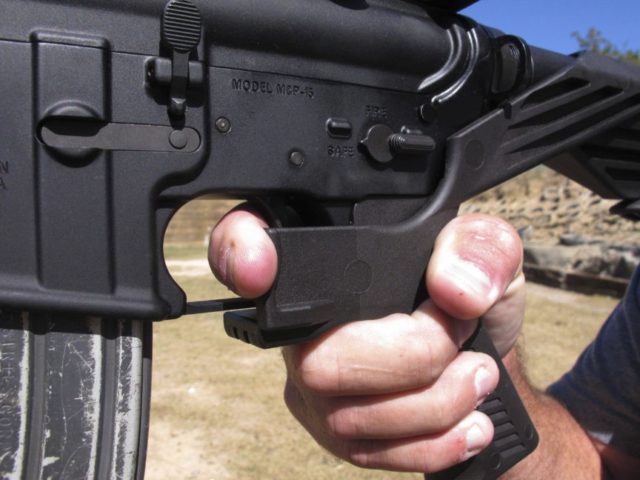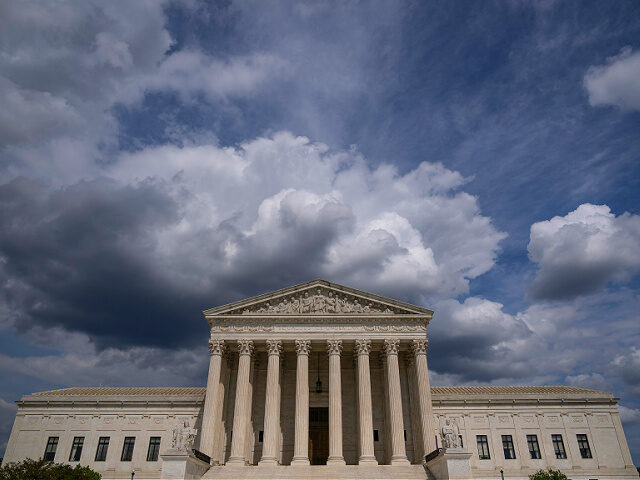WASHINGTON, DC – Guns are back at the Supreme Court, as the justices announced on Friday they will decide on free speech rights for the National Rifle Association (NRA) and whether the federal government can ban bump stocks, which are a firearm accessory, by calling them machineguns.
People usually think of the Second Amendment right to keep and bear arms when the think of the NRA, but the provision of the Constitution in the NRA’s case this time is actually about the First Amendment, not the Second.
The NRA is represented by one of the country’s foremost First Amendment scholars, Prof. Eugene Volokh, as well as attorneys who have been representing the NRA for years in the lower courts. The NRA’s petition explains that the head of New York’s Department of Financial Services is using “pressure tactics—including backchannel threats, ominous guidance letters, and selective enforcement of regulatory infractions—to induce banks and insurance companies to avoid doing business with” the NRA solely because of the civil rights organization’s advocacy for the Second Amendment.
The justices will decide whether a government leader threatening to use his agency’s power against private businesses if they do business with a speaker against which the government is hostile or because the government thinks there is a “general backlash” against the speaker.
This is a profoundly significant First Amendment case in the current cultural and political environment. As Volokh and his colleagues write:
The public importance of this case cannot be overstated. A regulatory regime—even a facially content-neutral one—that inhibits protected freedoms of expression and association violates the First Amendment. An overt campaign by state officials to wield regulatory power against a disfavored civil rights organization—here the NRA—precisely because of its disfavored speech at least as clearly merits this Court’s attention and reversal.
On the same day, the court announced that it also taking another gun case, though ironically this is not a Second Amendment case, either.
In the aftermath of the Las Vegas shooting in 2017, the Bureau of Alcohol, Tobacco, Firearms and Explosives (ATF) issued a regulation to ban bump stocks.

n this Oct. 4, 2017, file photo, shooting instructor Frankie McRae demonstrates the grip on an AR-15 rifle fitted with a bump stock at his 37 PSR Gun Club in Bunnlevel, N.C. Some states and cities are taking the lead on banning bump stocks as efforts stall in Washington. The controversial device was used in the Las Vegas shooting, allowing a semi-automatic rifle to mimic a fully automatic firearm. Gun-control advocates say the push fits a pattern in gun politics: inaction in Washington that forces states to take charge. (AP Photo/Allen G. Breed, File)
Federal law defines a machinegun as “any weapon which shoots, is designed to shoot, or can be readily restored to shoot, automatically more than one shot, without manual reloading, by a single function of the trigger.”
Bump stocks are a spring-like accessory that a person can attach to the stock (i.e., the butt) of a semi-auto rifle where the stocks rests on the shoulder, where the recoil of a shot causes the firearm to bounce back, then forward, resulting in another trigger pull, even though the shooter’s finger has not moved, discharging another shot.
This cycle can repeat quickly, resulting in rapid fire. But each shot requires a separate function of the trigger, unlike a machinegun, where a shooter can keep the trigger pulled back.
ATF’s regulation redefined the word “machinegun” to mean that the gun fires rapidly without the shooter deliberately squeezing the trigger for each shot. The New Civil Liberties Alliance (NCLA) sued under the Administrative Procedure Act (APA), arguing that ATF does not have that authority under the APA to change Congress’s definition.
The federal agency responded by saying that the term “machinegun” can be thought of as ambiguous, asking for courts to defer to its interpretation of the National Firearms Act under what is called Chevron deference.
This case is also tied to a major case this term, Loper Bright, where the Supreme Court is considering overruling Chevron deference, which would have massive implications for the reach of the federal bureaucracy.
The Fifth Circuit appeals court struck down ATF’s rule, holding that the law’s definition of machinegun is unambiguous and cannot include bump stocks. In order to ban them, Congress would have to do so in a new law. U.S. Solicitor General Elizabeth Prelogar asked the High Court to review the decision, and the justices typically grant such petitions filed by the federal government.
Both cases are likely to be argued in early spring, with a decision before July 2024, right before the presidential election.
The cases are National Rifle Association of America v. Vullo, No. 22-842, and Garland v. Cargill, No. 22-976, in the Supreme Court of the United States.
Breitbart News senior legal contributor Ken Klukowski is a lawyer who served in the White House and Justice Department.

COMMENTS
Please let us know if you're having issues with commenting.